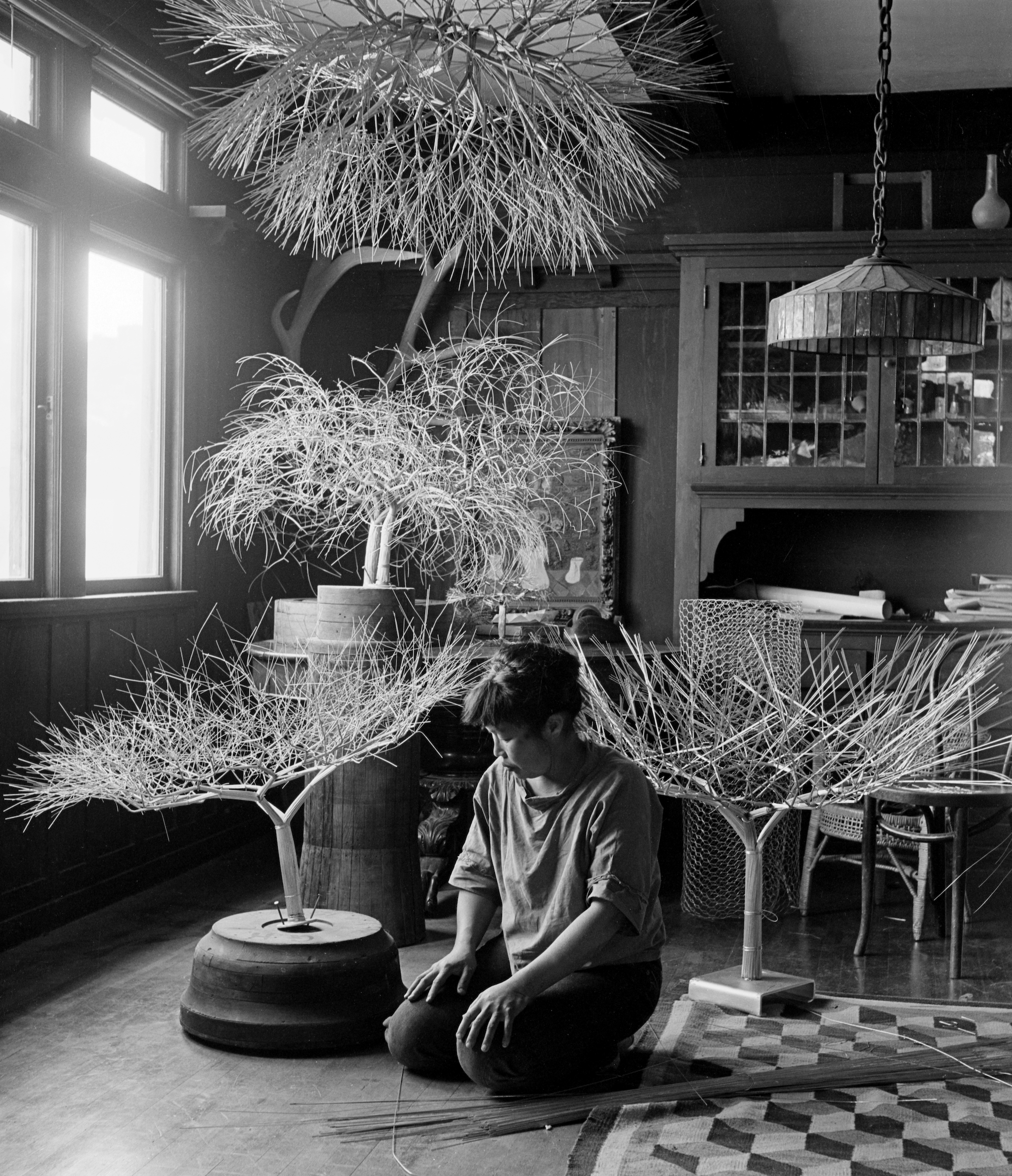
Imogen Cunningham, Ruth in Her Dinning Room with Tied-Wire Sculptures, 1963
This 1963 portrait, taken by Ruth Asawa’s close friend Imogen Cunningham (a prominent botanical photographer) shows the artist alongside several of her tied-wire sculptures. Although these are her most obviously plant-like works in silhouette and form, the American artist also viewed her interlocking wire sculptures as inspired by roots and branches, with the undulating spheres mirroring roots plunging into the earth.
Bone structures and the earthly movements of oil, soap and smoke also inspired the designs. The artist looks quietly towards the ground, a life of geometry, learning and contemplation captured in the safety of home.
“The artist looks quietly towards the ground, a life of geometry, learning and contemplation captured in the safety of home”
Born in Norwalk, California in 1926, Asawa and her Japanese parents were forced into internment camps in 1942 after the US entered World War II. There she met other exiled artists and even Disney animators, many of whom became part of her wide roster of artists and mentors.
She enrolled at the experimental Black Mountain College in 1946. Here her craft dexterity and vision caught the attention of Josef Albers, whose teachings were inspired by Taoism and Buddhism, which reconnected the artist with her parents’ spiritual heritage.
The learning environment “profoundly influenced my outlook on the value of life and the true nature of freedom,” Asawa said, paving the way for her own career as an arts educator. Alongside her renowned hanging wire sculptures, the artist’s solo retrospective at Modern Art Oxford displays watercolours, drawings and archival fragments, piecing together a life lived at the intersection of art and instruction.
“It is the perfect visualisation of the artist’s long-standing philosophy of art and family, the ‘integration of creative labour within daily life’”
Another of Cunningham’s photographs from 1957 shows Asawa sitting alongside her young children, with wire sculptures hanging casually above them. It is the perfect visualisation of the artist’s long-standing philosophy of art and family, the “integration of creative labour within daily life”.
Ravi Ghosh is Elephant’s editorial assistant
Ruth Asawa: Citizen of the Universe is at Modern Art Oxford until 21 August 2022






